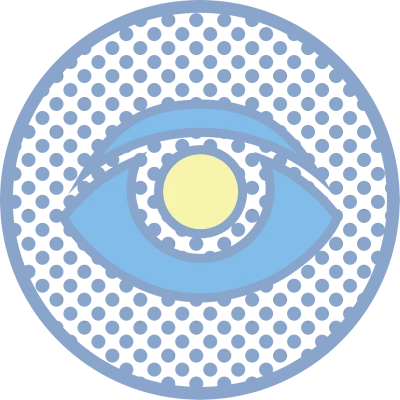What is Diabetic Retinopathy?
Diabetic Retinopathy is a serious diabetes-related eye condition that affects the retina, the light-sensitive tissue at the back of the eye. It occurs when high blood sugar levels damage the small blood vessels in the retina, leading to vision impairment and, in severe cases, blindness. This condition progresses gradually, often without noticeable symptoms in the early stages, making regular eye checkups crucial for early detection and management.diabetes-related eye condition
Doctor Speaks: Diabetic Retinopathy
Symptoms of Diabetic Retinopathy
The signs of diabetic retinopathy often don’t appear until significant damage has occurred inside the eye. Recognizing the symptoms early can help prevent severe vision loss.
1. Blurred Vision or Loss of Vision
As the diabetic retinopathy stages progress, the damaged blood vessels may leak fluid into the retina, causing blurred vision.
2. Seeing Floaters or Dark Spots
Dark spots or floaters appear when bleeding occurs inside the eye due to diabetic retinopathy, blocking light from reaching the retina.
3. Difficulty Seeing at Night
Patients may struggle with night vision due to decreased light sensitivity, which is one of the signs of diabetic retinopathy.
4. Difficulty Distinguishing Colors
As retinal cells become damaged, it may become challenging to differentiate between colors.

What Are the Causes of Diabetic Retinopathy?
The primary diabetic retinopathy causes include prolonged high blood sugar levels and associated conditions. The damage occurs in four stages:
1. Mild Nonproliferative Retinopathy: Small bulges form in the blood vessels, causing leakage.
2. Moderate Nonproliferative Retinopathy: Blood vessels swell and distort, further restricting blood flow.
3. Severe Nonproliferative Retinopathy: Blocked blood vessels deprive the retina of oxygen, leading to new, fragile vessel growth.
4. Proliferative Diabetic Retinopathy:
Advanced stage where new blood vessels form abnormally, leading to severe vision impairment.
Types of Diabetic Retinopathy
Proliferative Diabetic Retinopathy
The advanced form of the disease, where new, fragile blood vessels grow abnormally, leading to retinal detachment or hemorrhage, which can cause blindness.
Non Proliferative Diabetic Retinopathy
This is the early stage where tiny blood vessels swell and leak fluid into the retina, leading to mild vision problems.
Diabetic Retinopathy Risk Factors
Several factors increase the risk of developing diabetic retinopathy:
-
Uncontrolled blood sugar levels
-
High blood pressure and cholesterol
-
Long-term diabetes (Type 1 or Type 2)
-
Smoking and poor lifestyle habits
-
Pregnancy-related diabetes (Gestational Diabetes)

How to Prevent Diabetic Retinopathy?
Preventing diabetic retinopathy involves maintaining overall eye health and managing diabetes effectively:
- Control blood sugar levels through a healthy diet and medication.
- Monitor blood pressure and cholesterol to reduce strain on blood vessels.
- Have regular eye exams to detect early changes in the retina.
- Quit smoking to improve circulation and eye health.
Stages of Diabetic Retinopathy
The diabetic retinopathy stages progress from mild to severe, requiring close monitoring and treatment:
- 1. Mild NPDR – Tiny swellings in the blood vessels, minor leakage.
- 2. Moderate NPDR – Blood vessel swelling restricts oxygen supply.
- 3. Severe NPDR – Widespread blockage leads to abnormal vessel growth.
- 4. Proliferative Diabetic Retinopathy (PDR) – Risk of hemorrhage and permanent vision loss.
Diabetic Retinopathy Diagnosis
1. Visual Acuity Testing
A standard eye test to measure clarity of vision.
2. Tonometry
Measures intraocular pressure to assess eye health.
3. Pupil Dilation Exam
Drops are used to widen the pupil, allowing the doctor to examine the retina.
4. Optical Coherence Tomography (OCT)
A detailed imaging test that detects retinal swelling and thickness changes.
5. Fundus Fluorescein Angiography (FFA)
A dye is injected into the bloodstream to highlight blood vessel abnormalities in the retina.
Management of Diabetic Retinopathy
Effective management of diabetic retinopathy depends on the severity of the condition:
- Mild cases require regular monitoring and blood sugar control.
- Moderate to severe cases may require laser therapy or injections to reduce swelling.
- Advanced cases often require vitrectomy surgery to remove blood and prevent retinal detachment.
Treatment Modalities
The goal of any treatment is to slow or stop the progression of the disease. In the early stages of non-proliferative diabetic retinopathy, regular monitoring may be the only treatment. Diet and exercise and controlling blood sugar levels can help control the progression of the disease.
Laser : If the disease advances, the blood vessels can leak blood and fluid into the retina, leading to macular edema. Laser treatment can stop this leakage. Focal laser photocoagulation involves using a laser to target a specific leaky vessel in the macula to keep macular edema from worsening. Widespread blood vessel growth in the retina, which occurs in proliferative diabetic retinopathy, can be treated by creating a pattern of scattered laser burns across the retina. This causes abnormal blood vessels to shrink and disappear.
Medical management: Injection of anti VEGF medication into the eye may help to reduce swelling of the macula, slowing vision loss and perhaps improving vision. Steroid injection into the eye is another option to reduce macular swelling.
Surgical management: Vitrectomy involves removing scar tissue and blood from the vitreous fluid of the eye.
Written by: Dr. Preetha Rajasekaran – Consultant Ophthalmologist, Porur
Frequently Asked Questions (FAQs) about Diabetic Retinopathy
Can diabetic retinopathy be reversed?
Diabetic retinopathy cannot be fully reversed, but its progression can be slowed or halted with proper management. Early-stage diabetic retinopathy may improve with strict blood sugar, blood pressure, and cholesterol control. However, once significant damage occurs, treatments like laser therapy, anti-VEGF injections, or surgery may be required to prevent further vision loss. Early detection and timely intervention are key to preserving eyesight.
How is diabetic retinopathy detected?
Diabetic retinopathy is detected through a comprehensive eye examination, which includes dilated eye exams, optical coherence tomography (OCT) scans, and fluorescein angiography. During the dilated eye exam, an ophthalmologist examines the retina for abnormal blood vessels, bleeding, or swelling. Regular screenings are crucial for individuals with diabetes, as early detection can prevent severe complications.
What is the first sign of diabetic retinopathy?
In the early stages, diabetic retinopathy may not cause noticeable symptoms. However, the first signs often include blurred vision, difficulty seeing at night, and the appearance of floaters or dark spots in the vision. As the condition progresses, vision may become increasingly distorted, and untreated cases can lead to blindness. Regular eye check-ups help in identifying and managing the condition before severe damage occurs.
How can I reduce my risk of diabetes-related retinopathy?
To reduce the risk of diabetic retinopathy, maintaining stable blood sugar levels is crucial. Managing blood pressure and cholesterol, following a healthy diet, exercising regularly, and avoiding smoking can help prevent complications. Regular eye exams allow for early detection, and if needed, timely treatment can prevent severe vision loss. Adhering to diabetes management plans as prescribed by a doctor is essential in protecting eye health.
What other eye conditions are related to diabetes-related retinopathy?
Diabetes-related retinopathy can lead to other serious eye conditions, including diabetic macular edema (DME), cataracts, and glaucoma. DME causes swelling in the retina, leading to vision impairment. Diabetes also increases the risk of cataracts at an earlier age and can contribute to the development of glaucoma, which damages the optic nerve. Managing diabetes effectively reduces the chances of these complications.
What foods help diabetic retinopathy?
A diet rich in antioxidants, omega-3 fatty acids, and essential vitamins can help manage diabetic retinopathy. Foods such as leafy greens, carrots, berries, fatty fish, nuts, seeds, and whole grains support eye health. Omega-3s help reduce inflammation, while vitamins C, E, and zinc promote retinal health. Avoiding excessive sugar, processed foods, and unhealthy fats can also help in preventing further damage.
What is the best treatment for diabetic retinopathy?
The best treatment for diabetic retinopathy depends on its severity. In mild cases, controlling blood sugar and maintaining a healthy lifestyle may be enough. For more advanced stages, treatments like laser photocoagulation, anti-VEGF injections, and vitrectomy surgery are available to manage swelling, stop abnormal blood vessel growth, and preserve vision. Regular monitoring and timely intervention are essential for effective treatment and prevention of vision loss.

Do not ignore eye trouble!
Now you can reach our senior doctors by booking an online video consultation or a hospital appointment
Book an appointment now


